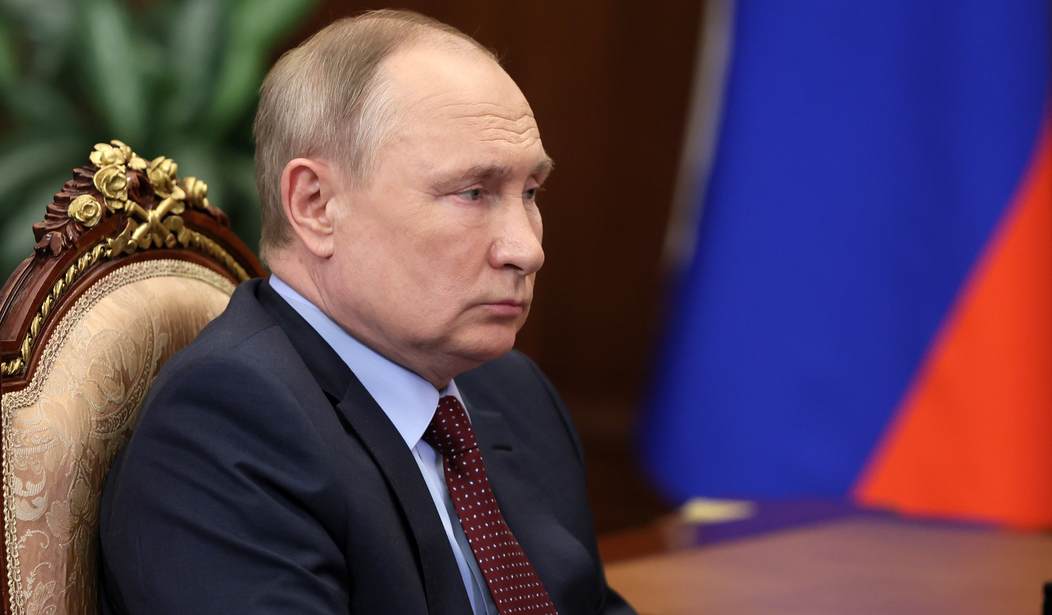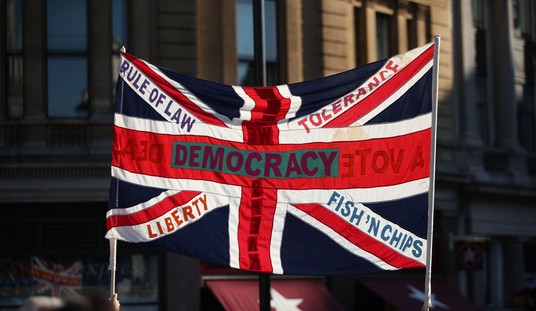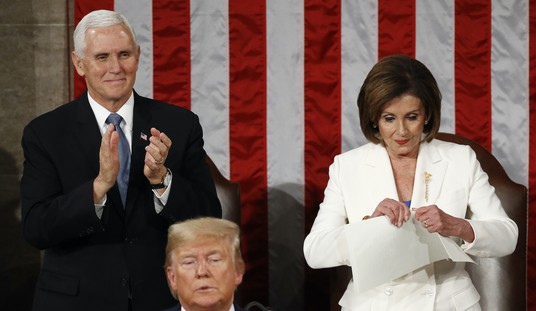The “partial mobilization” of Russian men to fight in Putin’s War in Ukraine is shaping up pretty much the fiasco we thought it would be (see Vladimir Putin to Address Russia; Annexation of Ukraine Provinces and Mobilization Seem to Be on the Table). It is equal parts black comedy, political thriller, and tragedy. But, don’t worry, the comedic and thriller elements will go away very soon.
The war in Ukraine has left Russia facing a military personnel crisis. About 75% of Russia’s regular ground forces participated in the opening act of the Special Military Operation (SMO). These were reinforced by Russian “National Guard” or Rosgvardiya; these are riot police and interior ministry security troops who report directly to Putin (for more on them, read Top General in Putin’s Personal Army Is Arrested by FSB). By late March, Putin decided to call up 100,000 reservists, supposedly all with combat experience, and to bring the Wagner Group mercenaries under military control. Russia Calling 100,000 Reservists to Active Duty and Moving Wagner Group From Syria to Deal With Ukraine Manpower Crunch.
Seven months into the war, Putin had to go back to the mobilization well. By styling his invasion as an SMO rather than a war, he placed all conscript soldiers off limits to combat duty. Under Russian law, contract soldiers can quit any time they wish…like when they’ve been notified they are heading to combat. The front covered by Russian troops is about 600 miles, roughly the distance from Washington, DC, to Atlanta. With the number of troops available, they have been hard-pressed to defend the frontage, constitute a mobile reserve, and rotate units out of the line for rest.
As I’ve mentioned before, Russia’s reserves are not our reserves. If you’ve served in the military, you are a member of the reserves until age 65. There is no regular training required or provided. The plan was to pick men who had needed skills; Defense Minister Shoigu mentioned armored vehicle drivers and riflemen, give them refresher training, and send them to Ukraine as replacements.
I covered the initial reaction to the mobilization order in Putin’s Mobilization Order Isn’t Getting the Reaction He’d Hoped in Russia. Enough information is emerging to give us picture of Russia’s mobilization effort. I apologize in advance for the number of tweets, but video and images are often worth more than words.
The immediate result was that getting a plane ticket out of the country was impossible.
A large number of men in Moscow, Russia at Vnukovo International Airport are waiting to leave Russia after a Partial Mobilization was announced yesterday
A flight from Russia to Turkey now costs Thousands of Dollars
These men don’t support the war when they are called to battle pic.twitter.com/wIyFsCtOPJ
— Ukraine Battle Map (@ukraine_map) September 22, 2022
At border crossings, the volume of traffic brought things to a halt.
NEW: Russians waiting at the border with Georgia in long lines of trucks and cars after Putin’s mobilization order, per a Sept 25 image.
More than 115,000 Russians have fled into Georgia since mobilization order last week. Lines formed more than 16km from border
📸:@Maxar pic.twitter.com/jqv3sgmH5P
— Jack Detsch (@JackDetsch) September 26, 2022
2/ Today, the Russian military began updating the ban databases at the border checkpoints with the lists of men banned from leaving Russia + sending armor & troops to prevent them from leaving the country. One BTR was spotted at the Russia-Georgia border, as @meduza_en reports. pic.twitter.com/traivh0gqy
— Viktor Kovalenko🇺🇲🇺🇦 (@MrKovalenko) September 26, 2022
Attention: foul language❗️ In this video from the #Russia–#Kazakhstan border, an angry Russian woman films faces of escapees and shames them for leaving Russia and evading #mobilization. pic.twitter.com/lNzp7Je8NN
— Viktor Kovalenko🇺🇲🇺🇦 (@MrKovalenko) September 26, 2022
GeoConfirmed.
"Queues from #Russia to #Georgia increased to 20 kilometers. There are more than 3,000 cars in traffic jams. Some #Russians walk towards the border, others try to get there by bicycle."
42.864972, 44.636206
GeoLocated by @neonhandrail https://t.co/3gGTavWgPm
— GeoConfirmed (@GeoConfirmed) September 25, 2022
The privileged, naturally, don’t fight. Even under Putin’s fascism, the notion of “rich man’s war but a poor man’s fight” holds.
The Guardian has seen evidence that the son of a Russian Duma MP, who frequently makes anti-western statements, left the country on a flight to Istanbul on Saturday. The MP escorted his son to airport to ensure he would be let out of country. @PjotrSauer https://t.co/gasgFNgo9u
— Andrew Roth (@Andrew__Roth) September 27, 2022
In places, men eligible for mobilization must have the permission of the conscription office to leave the country. If you aren’t familiar with Russian media figures, the “war cheerleader” is RT editor-in-chief and frequent television commentator Margarita Simonyan.
War cheerleader Simonyan reports in shock that Russian border guards wouldn’t let one of her sports desk employees “who just wanted to go on holiday” out of the country as he may have to be mobilised.
What a tragic and moving story. pic.twitter.com/poeaYt0OHC
— Shaun Walker (@shaunwalker7) September 26, 2022
Russia to introduce "exit visas" for draft-age men – Russian media citing sources
The draft-men age will need a permission from the draft office to exit Russia possible starting Sep 28.https://t.co/xQdel3yJJZ
— Euromaidan Press (@EuromaidanPress) September 25, 2022
There have been sporadic government-sponsored pro-conscription rallies. However, much more common have been riots and resistance.
My latest hobby is watching clips of the Russian version of tag, where the losers get conscripted and shipped off to Ukraine. pic.twitter.com/CU6qPt8LmR
— Armchair Copelord (@ArmchairCopelrd) September 25, 2022
@TrentTelenko @TM_Eubanks seems like muscovites don’t like the war now that conscription is in the air https://t.co/g1yJw5Hqw2
— pat bahn (@patbahn) September 22, 2022
PUTIN’s BRUTALITY: Igor Sushko @igorsushko reports that Russia’s OMON riot police killed a female protestor with a baton strike to the head. They quickly attempted to remove her body, but were filmed by other anti-mobilization protestors in Moscow. https://t.co/LWf6ksA5qk
— Chuck Pfarrer | Indications & Warnings | (@ChuckPfarrer) September 27, 2022
The situation is particularly tense in Central Asian areas, which seem to have been heavily targeted for conscription.
Street protests against Putin's #mobilization are growing in the southern #Dagestan region of #Russia. In #Makhachkala city, a hundred protesters had been arrested by riot police so far. pic.twitter.com/I8hzBW5N0f
— Viktor Kovalenko🇺🇲🇺🇦 (@MrKovalenko) September 26, 2022
In Dagestan, the interest in going to death is so great that riots broke out, which the Putinists had to calm down with weapons. pic.twitter.com/vpbTuhUrbs
— prcknedl ©️ ®️ (@prcknedl) September 25, 2022
The demonstrations also underscore the price of sending the OMON and SOBR of the Rosgvardiya off to war.
It’s an underappreciated fact about these authoritarian regimes, they have to employ massive security forces to keep their own population in line. Not to mention the amount of money it takes to constantly surveil, censor, and oppress.
— Dave 🇺🇸🇺🇦 (@eldaveoso) September 25, 2022
Even the elites don’t believe things are going well. For example, here is the aforementioned Simonyan commenting on the conscription process on a talk show hosted by regime propagandist Vladimir Solovyov.
Looks like the 🇷🇺 mobilization is going very well… pic.twitter.com/82kjUKth6n
— Carl Bildt (@carlbildt) September 26, 2022
For those who lose the lottery, so to speak, what awaits them is grim.
Russian reservists living the dream. pic.twitter.com/CVWDK5PFPs
— WorldOnAlert (@worldonalert) September 27, 2022
Equipment is barely serviceable, if even available.
Just needs a bit of elbow grease! pic.twitter.com/u1xZkwSjTP
— Dmitri (@wartranslated) September 24, 2022
#Ukraine: Apparently this is the condition of some of the AKMs that mobilised Russian men have been receiving. Pretty surprising they're not AK-74.
Although these could be probably just fine within hours, not a great look! Also, note 74-style refurb stock.pic.twitter.com/4mhHf3ycgk
— Cᴀʟɪʙʀᴇ Oʙsᴄᴜʀᴀ (@CalibreObscura) September 24, 2022
Оружие, не имеющее аналогов в мире pic.twitter.com/0PxJWN8cxA
— IanMatveev (@ian_matveev) September 24, 2022
Russian conscripts get Nagant/Mosin rifles, designed in 1890/91, and obsolete already at the times of WWII. pic.twitter.com/TU9h0HFPFF
— Sergej Sumlenny (@sumlenny) September 23, 2022
In the #Rostov region, obsolete military equipment was spotted being brought in as reinforcements for the #Russian army. pic.twitter.com/3Y9VSnkIlb
— NEXTA (@nexta_tv) September 25, 2022
Just a note, the condition of these weapons coming out of storage is very similar to that of armored vehicles pulled from storage depots. There is a theme here.
Soldiers are told to buy their own equipment because the government will not provide it.
"You get nothing from the military except uniforms and armor. Everything else you bring or find. Raid car first aid kits for tourniquets, tampons to shove in your bullet wounds, find sleeping bags too."
This from the world's 2nd army 🤣#mobilization #cannonfodder #mobilisation pic.twitter.com/LkF5stsPjW
— PB 4 UAF 🇺🇦 (@PatrickBucking5) September 27, 2022
The leadership is truly inspiring, only the best.
He continues by suggesting smearing eye balls with phosphorus for those with poor eyesight to practice observing at night. P2 pic.twitter.com/Byl7BwYw7t
— Dmitri (@wartranslated) September 27, 2022
The output is much as you might expect. Shortly after mobilization was announced, Ukraine’s President Zelensky made an address in Russian aimed at conscripts, their friends, and families.
1) All prisoner of war will be treated fairly in accordance with international law. They will be held in good conditions – with dignity, food, and medical care as needed. This promise is not new – and has verifiably held true throughout the course of this war.
— Sid Chambers, PhD 🇺🇦 (@ArtfulTakedown) September 25, 2022
3) If prisoner requests to not return to Russia, the request will be abided.
— Sid Chambers, PhD 🇺🇦 (@ArtfulTakedown) September 25, 2022
The Ukrainian government also set up a phone number that Russians could call to arrange their safe surrender. But, much to their surprise, they got calls from Russians who’d received a conscription notice but had not yet been inducted into the army.
Instead of getting at least two weeks of training, many are sent immediately to the front. There are reports of Russian troop trains being hit by artillery fire while on the way to their destinations. Mobilized soldiers have already started turning up as prisoners.
From mobilization to captivity in 3 days pic.twitter.com/JBJHwEa8FC
— ТРУХА⚡️English (@TpyxaNews) September 27, 2022
On 09/21/2022 he was mobilized in Moscow, and on 09/27/2022 he was taken prisoner. pic.twitter.com/2OtFrumgYs
— ТРУХА⚡️English (@TpyxaNews) September 27, 2022
While I have no insight into Putin’s strategy, it is clear that time and regime stability are two key factors. Shipping off 300,000 men to almost certain death or captivity in Ukraine will buy him some time. They may be little more than a collection of bollards and speedbumps, but they can fill the gaping holes in some units, and some percentage will turn out to be competent soldiers. To what end is Putin buying time? I can’t hazard a guess. If, as expected, he announces on Friday that he has annexed about a fifth of Ukraine, there is no longer any ground for negotiations that doesn’t involve the deck of the USS Missouri; see Russia’s Friends and Allies Join NATO in Rejecting Russia’s Imminent Annexation of Four Ukrainian Provinces.
Though a lot of us are getting a chuckle out of 20-mile-long traffic jams at border crossings and one-way tickets from Moscow to Bumfuk, Tajikistan costing €9,000, we shouldn’t lose sight of the fact that the regime could stop the mass exodus if it wanted to do so. This flight to avoid mobilization is allowed, I believe, because the men running away are those with education, means, and social standing. Just as our draft riots in the mid-1960s started at elite universities and spread outward, the men absconding to Georgia and Armenia have the potential to form an effective resistance to conscription and endanger the regime. Unfortunately for Russia, most of the men who flee mobilization will be lost forever. The men conscripted are generally poor, poorly educated, powerless, and ethnic minorities. No matter how mad they get, it will never be a threat to Putin’s regime.












Join the conversation as a VIP Member